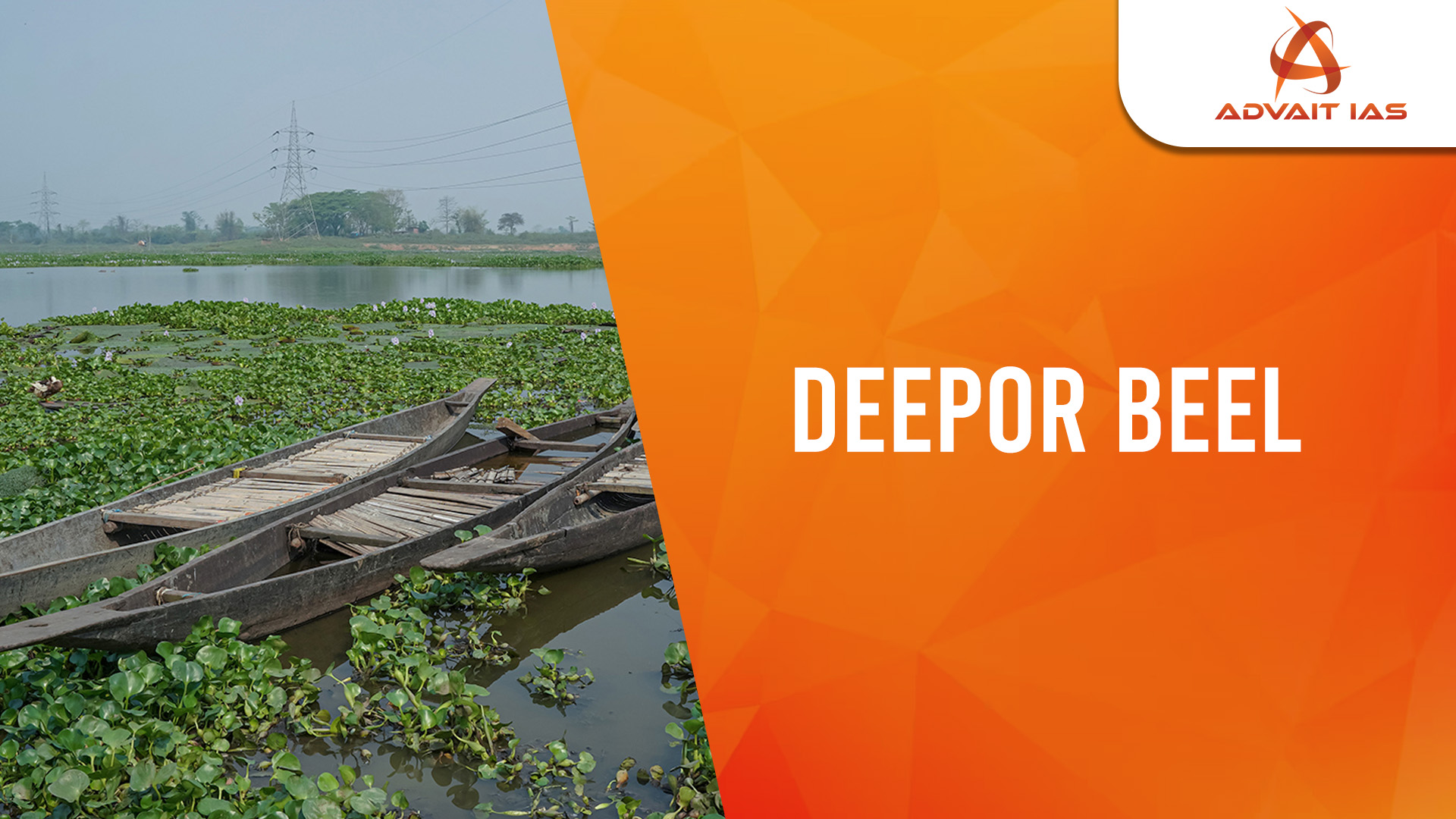Deepor Beel
- Location: Situated in Kamrup district, Assam, Deepor Beel is a permanent freshwater lake and bird sanctuary.
- Geographical Significance:
-
- A riverine wetland formed in a former channel of the Brahmaputra River.
- Lies south of the Brahmaputra’s main channel.
- Ramsar Site:
-
- Designated as a Ramsar site in 2002, the only one in Assam.
- Supports a range of aquatic life and 219 bird species.
- Bird Sanctuary:
-
- A key staging site for migratory birds, especially in winter.
- Habitat for globally threatened species like Spot-billed Pelican, Lesser Adjutant Stork, Greater Adjutant Stork, and Baer’s Pochard.
- Economic Importance:
-
- 50 fish species provide livelihoods to surrounding villages.
- Local revenue is generated from nymphaea nuts, flowers, ornamental fish, medicinal plants, and seeds of the Giant Water Lily (Euryale ferox).
- Eco-Sensitive Zone:
-
- Declared an Eco-Sensitive Zone by the Ministry of Environment in 2021, emphasizing its ecological significance.
Threats to Deepor Beel
- Illegal Garbage Dumping:
-
- Unregulated garbage disposal by the Guwahati Municipal Corporation (GMC) at the Boragaon dumping site, located close to the wetland.
- Violates National Green Tribunal (NGT) guidelines and creates a perpetually burning dump.
- Sewage Contamination:
-
- Discharge of sewage-contaminated water from the Mora Bharalu, Basistha, and Bahini rivers into Deepor Beel.
- Railway Project:
-
- Proposed railway track from Azara to Tetelia along Deepor Beel and through Rani-Garbhanga Reserve Forest threatens biodiversity and local communities.
- Water Pollution:
-
- Pollution Control Board Assam (PCBA) found biochemical oxygen demand (BOD) levels beyond permissible limits (3.0 mg/l), indicating severe water contamination.
- Storm-water Runoffs:
-
- Contaminants enter Deepor Beel through ground and storm-water runoffs.
- Non-compliance with Solid Waste Management Rules:
-
- The 150-ton daily solid waste limit is violated, with no adherence to guidelines for waste burning and plantation buffer zones.
- Lack of Monitoring and Treatment:
-
- No proper monitoring of groundwater quality or treatment of contaminated water discharged into the wetland.
- Odor and Air Pollution:
-
- Persistent stench from the burning dump site and harmful air quality impacts the wetland and nearby residents.
- Decentralized Waste Management Failure:
-
- Though GMC suggested decentralization of garbage disposal, dumping continues at Deepor Beel, exacerbating pollution.
- Loss of Biodiversity:
-
- These cumulative threats severely impact Deepor Beel’s biodiversity, including its aquatic life, bird species, and surrounding ecosystems.
Latest Government Initiatives for Deepor Beel
- Relocation of Boragaon Dump: Efforts to shift garbage dumping away from the wetland.
- De-silting and Gully Control: Measures to reduce siltation and sediment inflow.
- Weed Management: Removal of invasive species like water hyacinth.
- Tree Plantation: Reforestation over 3 hectares to restore ecological balance.
- Water Quality Monitoring: Regular assessment at inlets and outlets.
- Community Engagement: Capacity-building workshops and livelihood alternatives for locals.
- Tourism Promotion: Plans to streamline eco-tourism activities sustainably.
- Infrastructure Development: Watchtower construction for birdwatching and monitoring.
- Integrated Management Approach: Collaborative efforts involving government, locals, and NGOs.
- Mission LiFE: Promoting eco-friendly practices among local communities.






